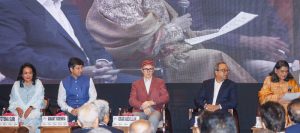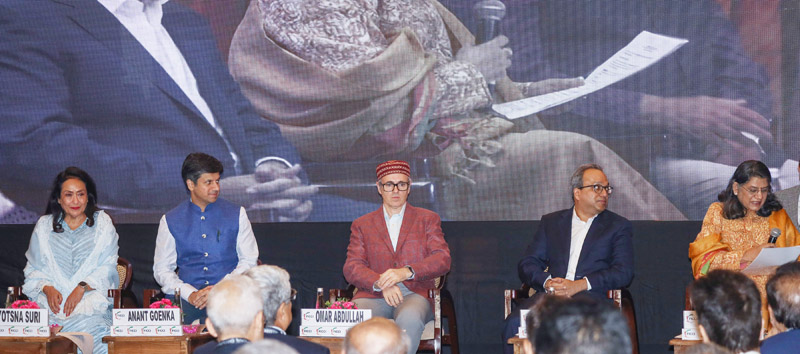Srinagar, Oct 14: Chief Minister Omar Abdullah today said J&K may face a shortfall of nearly Rs 1,000 crore in Goods and Services Tax (GST) revenue this year, stressing that the dip would further strain Jammu and Kashmir’s already deficit financial position.
Speaking at the National Executive Committee meeting of FICCI here, Omar said the shortfall stems from recent changes in GST rates and an overall economic slowdown that has affected multiple sectors since mid-April.
“Our internal assessment, coupled with the recent changes in GST rates—which will obviously impact our revenue—shows that we may face a hole of Rs 900–1,000 crore in GST earnings alone this year. J&K already has a deficit financial position, and Rs 1,000 crore is a lot of money to lose,” he said.
He added that the slowdown has hit almost every sector of the economy, which will impact the Government’s spending capacity.
“Across manufacturing, tourism, handicrafts, handlooms, agriculture, and horticulture, there has been a clear decline in activity since April. This will also affect the Government’s ability to spend as the financial year comes to a close,” the Chief Minister said.
Referring to the recent terror attack in Pahalgam, Omar said it was not just a blow to tourism but also to the overall perception of J&K as a safe destination.
Despite the challenges, the Chief Minister expressed optimism about recovery.
“I won’t say we are at our lowest right now, but we came pretty close to that earlier this year. The direction is positive, but it will take a lot of time and effort to bring this vehicle back on track,” he said.
He added that the summer season was “entirely lost” and even autumn hadn’t met expectations.
“We were hoping for strong tourism growth, particularly from West Bengal, but that didn’t materialize. Now we are looking forward to a decent winter. If we get good snowfall, we can hopefully rebuild our tourism around it,” he said.
“Contrary to popular belief, tourism is a much smaller part of J&K’s economy. The mainstay remains agriculture and horticulture, which support over 60–70 percent of our workforce and contribute the most to our GDP,” he said.
On infrastructure development, the CM said projects such as the Katra Expressway and the four-laning of the National Highway would open new opportunities in logistics and connectivity, strengthening J&K’s economic position.
He said that the agriculture sector in J&K holds immense potential and requires focused attention towards value addition to unlock the full gamut of business opportunities across J&K.
Highlighting the immense potential of the agriculture sector, the Chief Minister said that most of the produce from Jammu and Kashmir leaves the region in its raw form, with very little processing or value addition being done locally.
“This opens significant opportunities for industrial growth, both on Jammu side and Kashmir’s side,” he stated.
The meeting was attended by FICCI President Harsh Vardhan Agarwal, Senior Vice President Anant Goenka, Director General FICCI Jyoti Vij, Past President Dr. Jyotsna Suri, Chairman FICCI J&K Council Mushtaq A. Burza, and members of the National Executive Council.
Citing the dairy sector as an example, Omar said that only about 4–5 percent of the J&K’s dairy production is processed within J&K, while the rest goes unprocessed into the market.
He urged industry leaders to explore these areas for investment and growth.
The Chief Minister informed that the Government is simultaneously engaging with domestic and international tourism partners to attract visitors and revive the sector.
Reiterating the Government’s commitment to improving the ease of doing business, the Chief Minister invited FICCI’s inputs on policy reforms to make J&K more investor-friendly.
He also called upon the corporate sector to support Jammu and Kashmir through Corporate Social Responsibility (CSR) in youth-centric areas such as sports infrastructure, libraries and skill upgradation.
Omar urged companies to partner with the Government in upgrading Industrial Training Institutes (ITIs) and skill centres to create an employable local workforce.


